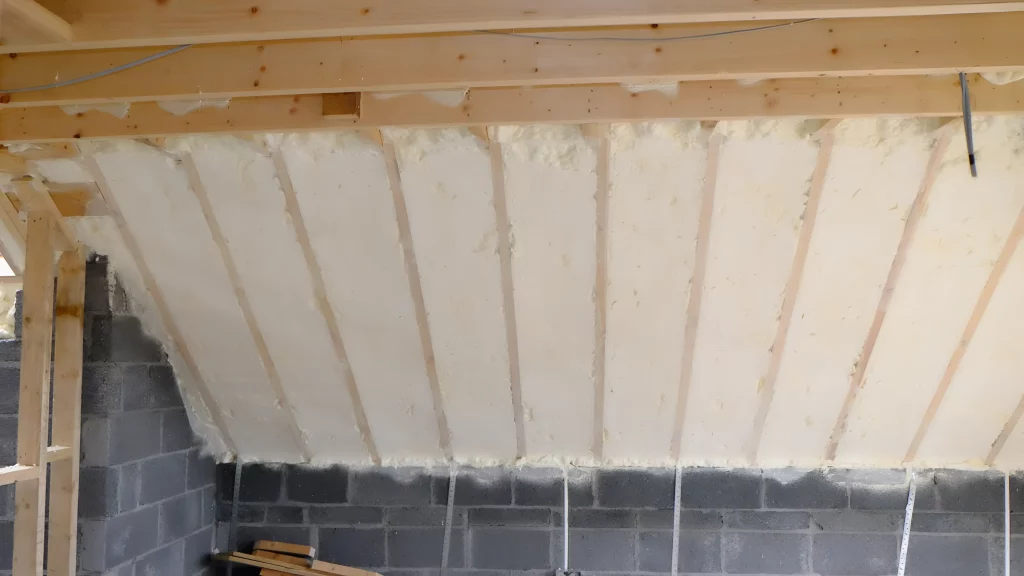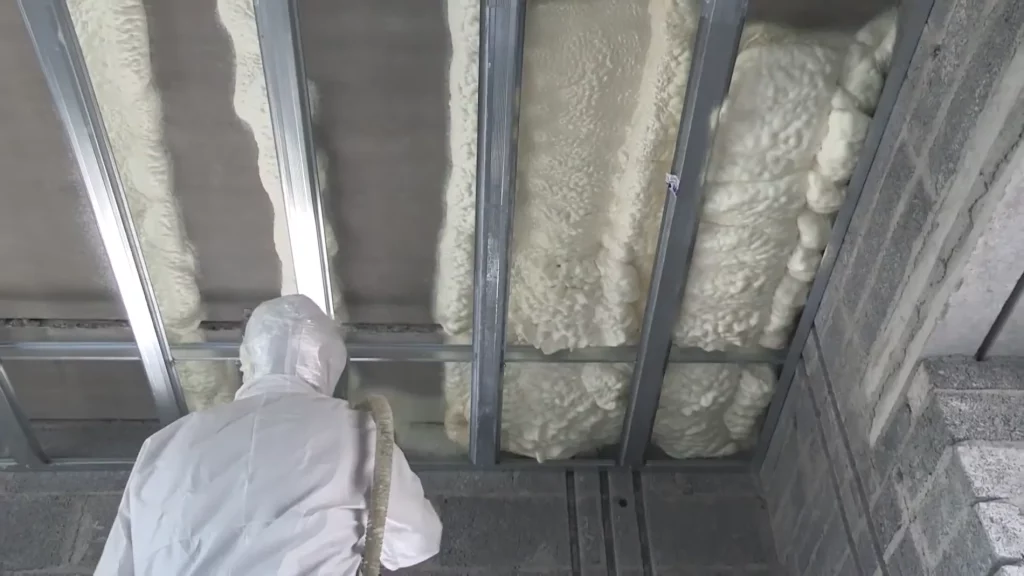Whether you own a cozy home in the suburbs or run a bustling office in downtown Raleigh, keeping indoor spaces comfortable year-round starts with smart insulation choices. Imagine stepping into a room where the air feels just right, no drafts sneaking through cracks, and your heating or cooling system doesn’t work overtime. That’s the reality good insulation delivers. Yet, many people overlook it or stick with outdated options, leading to skyrocketing energy bills and uneven temperatures.
Insulation acts as a barrier that slows heat transfer, helping maintain steady indoor conditions while cutting down on energy use. For homes, it means lower utility costs and a healthier living space. Businesses benefit too, with reduced overhead and improved productivity from consistent environments. In fact, proper insulation can slash heating and cooling expenses by up to 20%, according to the U.S. Department of Energy. This guide pulls together everything you need to know about insulation types, how they perform, and their true value over time.
Over the next sections, you’ll explore the fundamentals of insulation and why it plays such a big role in daily life. From there, dive into the main types available, including their strengths and weaknesses. Learn how to gauge efficiency with key metrics like R-value, and calculate what works best for your setup. You’ll also get a clear picture of costs, from upfront investments to long-term savings, backed by real data. Practical advice on installation rounds out the core, followed by tips for tackling common issues. Finally, look ahead to emerging trends that could change how you approach insulation.
This resource draws from years of hands-on work installing and advising on insulation solutions across residential and commercial projects. It equips you with the knowledge to make informed decisions, whether you’re upgrading a single room or outfitting an entire building. By the end, you’ll feel ready to optimize your space for comfort, efficiency, and savings.
Understanding Insulation Basics
Insulation works by trapping pockets of air or using materials that resist heat flow. Think of it as a cozy blanket for your home or office walls, roof, and floors. It comes in various forms, but the goal stays the same: minimize energy loss and gain control over your indoor climate.
Start with the science. Heat moves in three ways: conduction through solid materials, convection via air currents, and radiation from warmer to cooler surfaces. Effective insulation blocks all three. For instance, in winter, it keeps warmth inside and cold out. In summer, it does the opposite, reflecting heat away.
Why does this matter? Poor insulation leads to discomfort, higher bills, and even structural problems like moisture buildup. In the U.S., buildings account for nearly 40% of energy consumption, much of it tied to heating and cooling, reports the Environmental Protection Agency. For homeowners, that translates to average annual savings of $200 to $500 with better setups. Businesses see even bigger impacts; a warehouse with solid insulation might cut HVAC costs by 15% or more.
Consider your building’s specifics. Older homes often have gaps or thin barriers, while new constructions might use modern materials but skip full coverage. Businesses, especially those with high ceilings or large windows, face unique leaks. Assessing your current state is step one—check attics, basements, and ducts for signs of wear.
Expert Tip: Walk through your space on a windy day. Feel for drafts around doors, windows, and outlets. A simple incense stick test shows air movement; watch the smoke curl toward weak spots.
Types of Insulation Available
Now that we’ve covered the basics, choosing the right type depends on your space, budget, and goals. Common options include batts, blown-in, foam board, and spray foam. Each has unique traits suited to walls, attics, or floors.
Fiberglass batts are the go-to for many DIY projects. These pink or yellow rolls fit between studs like puzzle pieces. They’re affordable and widely available, but they can settle over time, losing effectiveness if not installed perfectly.
Cellulose, made from recycled paper, gets blown into attics or walls. It packs tightly, sealing gaps better than batts. Treated for fire and pests, it’s eco-friendly, though it absorbs moisture if not ventilated properly.
Rigid foam boards, often polystyrene or polyisocyanurate, offer high resistance in slabs. Cut them to fit basements or exteriors. They’re moisture-resistant but need a thermal barrier to avoid fire risks.
Spray foam expands to fill every crevice, creating an airtight seal. Open-cell spray foam versions are lighter and better for soundproofing; closed-cell spray foam provide more structure and water resistance. This type shines in irregular spaces like around pipes.
Here’s a quick comparison to help you weigh options:
| Type | R-Value per Inch | Cost per Sq Ft (Installed) | Best For | Drawbacks |
|---|---|---|---|---|
| Fiberglass | 2.9-3.8 | $0.50-$1.50 | Walls, attics | Irritating to handle, can sag |
| Cellulose | 3.1-3.7 | $1.00-$2.00 | Attics, walls | Moisture sensitive |
| Foam Board | 3.6-5.0 | $1.50-$3.00 | Basements, exteriors | Requires covering for fire |
| Spray Foam | 3.5-7.0 (closed) | $2.00-$4.00 | Hard-to-reach areas | Higher upfront cost |
Data from Energy Star guides these averages; actual costs vary by location and thickness.
For homes, batts work well in standard framing. Businesses with open layouts might prefer blown-in for quick coverage. Always match the type to your climate—denser options suit colder zones.
Key Takeaways:
- Select insulation based on space shape and climate needs.
- Spray foam excels in sealing but costs more initially.
- Batts offer easy installation for budget-conscious projects.
Measuring Insulation Efficiency
Efficiency boils down to how well insulation resists heat flow, measured by R-value. Higher numbers mean better performance. An R-30 attic in a moderate climate keeps heat in better than R-19.
Don’t stop at R-value. Consider U-factor for windows, which shows overall heat loss, or air leakage tests for the whole building. Tools like infrared cameras reveal hot spots during energy audits.
Calculate your needs with online calculators from Oak Ridge National Laboratory. Input square footage, climate zone, and current setup to get recommended R-values. For example, a Raleigh home might need R-38 to R-49 in attics due to humid summers and mild winters.
Efficiency also ties to installation quality. Gaps reduce R-value by 20-30%, per Building Science Corporation. Professionals use baffles in attics to ensure airflow, preventing condensation.
Market data shows insulation upgrades yield quick returns. Homeowners recoup 60-75% of costs through savings within five years, according to the National Association of Home Builders.
Expert Tip: Test efficiency seasonally. In winter, monitor thermostat consistency; in summer, check humidity levels. Apps like those from energy utilities track usage patterns.
For businesses, efficiency metrics impact compliance. LEED certifications favor high-R materials, boosting property value.
Cost-Effectiveness: Breaking Down the Numbers
Upfront costs grab attention, but long-term savings tell the full story. Fiberglass runs $0.30 to $1.50 per square foot for materials alone, while spray foam hits $1 to $3. Installation adds 50-100% more, depending on access.
Factor in energy savings, building on the potential reductions of 10-20% in heating and cooling costs outlined earlier. A typical home spends $1,500 yearly on HVAC, saving $150-$300 annually with effective insulation, says the U.S. Energy Information Administration. Over 10 years, that’s $1,500-$3,000 saved, often exceeding initial outlay.
Businesses scale bigger. A 10,000 sq ft office might invest $20,000 in upgrades but save $5,000 yearly in utilities. Payback periods average 3-5 years, with incentives like federal tax credits up to 30% for energy-efficient installs.
Consider maintenance too. Some types last 20+ years without replacement; others need checks for settling.
Here’s a sample ROI table for a 2,000 sq ft home:
| Insulation Type | Install Cost | Annual Savings | Payback Period (Years) |
|---|---|---|---|
| Fiberglass | $2,000 | $200 | 10 |
| Cellulose | $3,000 | $300 | 10 |
| Spray Foam | $5,000 | $500 | 10 |
Estimates based on moderate climate data from HomeAdvisor.
Hidden costs include permits or asbestos removal in older buildings. Weigh these against benefits like increased home value—insulated properties sell 5-7% higher, per real estate studies.
Inflation pushes energy prices up 3-5% yearly, amplifying savings. In 2023, average U.S. household energy costs rose 8%, making efficiency urgent.
Key Takeaways:
- Long-term savings often double initial investments.
- Businesses see faster ROI on larger scales.
- Tax incentives can offset 20-30% of costs.

Installation Methods and Best Practices
Proper installation maximizes benefits. DIY suits simple batt jobs, but pros handle complex areas like spray foam, which requires equipment.
Steps for any project: Seal air leaks first with caulk or weatherstripping. Measure spaces accurately. Wear protective gear—masks for fibers, gloves for foams.
For attics, lay insulation over existing layers if compatible, avoiding compression. Walls need vapor barriers in humid areas to prevent mold.
Business installs often involve phased work to minimize downtime. Coordinate with HVAC pros for duct sealing.
Expert Tip: Schedule installs during mild weather to test systems immediately. Post-install, run a blower door test to verify airtightness.
Common tools: Staplers for batts, blowers for loose-fill, sprayers for foam. Safety first—ventilate and follow local codes.
Hire certified installers for warranties and code compliance. In Raleigh, local codes emphasize ventilation to combat humidity.
Common Challenges and How to Overcome Them
How does moisture affect insulation?
Moisture is a major concern in damp climates. It degrades materials and encourages mold growth. The solution is to use vapor barriers and confirm attic vents are functioning properly.
Can pests damage insulation?
Yes, pests chew through softer options like cellulose. Choosing treated versions or pairing insulation with protective barriers helps reduce the risk of infestations.
Expert Tip: Document your setup with photos before and after. This helps with future maintenance or resale.
Aging insulation loses R-value over time. Inspect every 5-10 years; top off as needed.
Future Trends in Insulation Technology
Smart materials lead the way. Aerogels, with R-values up to 10 per inch, pack performance into thin layers—ideal for retrofits.
Phase-change materials absorb and release heat, stabilizing temperatures without extra energy.
Sustainable options grow, like mycelium-based insulators from fungi, reducing carbon footprints.
Market stats: The global insulation industry hits $70 billion by 2028, driven by green building demands, per Grand View Research.
Integration with IoT sensors monitors performance in real-time, alerting to issues.

Frequently Asked Questions About Home and Business Insulation
What R-value do I need for my Raleigh home?
In Raleigh’s climate zone 3, aim for R-30 to R-49 in attics, R-13 to R-21 for walls. Use DOE calculators to fine-tune based on your home’s size and features.
Is spray foam worth the extra cost?
Yes, if sealing gaps is key. It offers superior efficiency and longevity, paying back in 7-10 years through lower bills.
Can I install insulation myself?
Basic batts yes, but pros recommended for blown-in or foam to avoid health risks and ensure performance.
How does insulation affect home value?
It boosts appeal by showing energy efficiency, often increasing resale by 3-5% in eco-conscious markets.
What’s the best insulation for soundproofing?
Open-cell spray foam or dense cellulose excel, as they dampen vibrations better than rigid boards.
Are there rebates for insulation upgrades?
Check Energy Star for federal credits up to $1,200, plus local Raleigh utility incentives for qualifying installs.
Putting Your Insulation Strategy into Action
Building on the future trends and FAQs, you’ve covered the essentials: from types and efficiency metrics to costs and trends. Key points include selecting materials that fit your space, prioritizing high R-value with tight seals, and focusing on savings that outpace investments. Challenges like moisture are manageable with planning, and emerging innovations can align these strategies with long-term sustainability.
Use this guide as your reference. Start by auditing your current setup, then prioritize high-impact areas like attics. Track progress with energy bills to see results. With these steps, you’ll create a more comfortable, efficient space that stands the test of time.
Need Expert Guidance?
For personalized advice on insulation suited to your Raleigh property, contact Raleigh Excel Spray Foam Insulation. Their team specializes in efficient, durable solutions for homes and businesses. Reach out via email at [email protected] or call (919) 301-9435 to schedule a consultation and get a free assessment. Take the first step toward lasting comfort and savings today.
Sources
- U.S. Department of Energy – Guide on insulation basics and energy savings.
- Environmental Protection Agency – Data on building energy consumption.
- Energy Star – Resource for insulation types, R-values, and costs.




